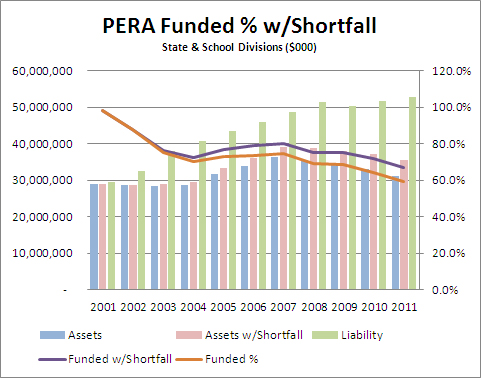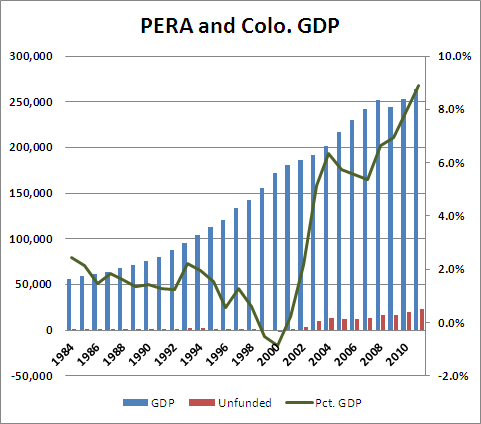Archive for May, 2013
Anonymity Matters
Posted by Joshua Sharf in National Politics on May 24th, 2013
During the IRS hearings, a recurring Democrat theme was that the IRS’s interpretation of 501(c)4 status, combined with the Citizens United ruling opened the door to political corruption by allowing – gasp! – anonymous political speech. The argument, of course, is that you need to discount the speech based on the speaker.
This claim ignores the fact that there’s nothing inherently corrupt about anonymous speech, or in the Supreme Court’s interpretation, the anonymous funding of speech. As many have pointed out, anonymous speech on substantive, even existential, political issues goes back to the founding days of the Republic. The most famous example is the Federalist Papers, but even if you accept the notion that people didn’t know who Publius was the way that people today don’t know who Richard Bachman is, there are other contemporaneous examples. Pauline Maier, in her fine survey of the Constitution’s ratification, Ratification, cites numerous anonymous anti-federalist writers, including a few that historians still haven’t been able to identify.
Unfortunately, for Democrats, a lack of anonymity is a feature, not a bug. Via Instapundit, Kim Strassel’s column in today’s Wall Street Journal explains why:
In early August 2008, the New York Times trumpeted the creation of a left-wing group (a 501(c)4) called Accountable America. Founded by Obama supporter and liberal activist Tom Mattzie, the group—as the story explained—would start by sending “warning” letters to 10,000 GOP donors, “hoping to create a chilling effect that will dry up contributions.” The letters would alert “right-wing groups to a variety of potential dangers, including legal trouble, public exposure and watchdog groups digging through their lives.” As Mr. Mattzie told Mother Jones: “We’re going to put them at risk.” (emphasis added)
In an perfect example of blaming the victim, some Democrats would like to change the story from one of Democratic corruption of the IRS to the imaginary corruption of the political process by the Tea Party groups who found themselves on the wrong end of a partisan IRS proctological examination.
The Democrats argued that the sole purpose of claiming 501(c)4 status rather than forming a 527 was to keep donor lists secret. There’s absolutely no evidence that this is true, but given Mattzie’s manifest intent to make Republican and conservative donors suffer personally for their political speech, could you blame conservative groups if it were?
Daily Glimpse May 21, 2013
Posted by Joshua Sharf in PPC on May 21st, 2013
Daily Links From Glimpse From a Height
- Mission Impossible, White House Style
The American Spectator reports that according to White House visitor logs, President Obama met with the head of the IRS employees union the day before the IRS began targeting Tea Party groups for special attention: According to the White House Visitors Log, provided here in searchable form by U.S. News and World Report, the president of the anti-Tea Party […]
Obamacare’s Perverse Incentives
Posted by Joshua Sharf in Health Care on May 20th, 2013
The Wall Street Journal reports that some businesses may be moving towards plans that meet Obamacare’s minimum requirements, and little else:
Benefits advisers and insurance brokers—bucking a commonly held expectation that the law would broadly enrich benefits—are pitching these low-benefit plans around the country. They cover minimal requirements such as preventive services, but often little more. Some of the plans wouldn’t cover surgery, X-rays or prenatal care at all. Others will be paired with limited packages to cover additional services, for instance, $100 a day for a hospital visit.
…
Experts worried that plans lacking hospital or other major benefits could leave workers vulnerable to major accidents and illnesses. “A plan that just covers some doctor visits and preventive care, I wouldn’t say that’s real health-insurance protection,” said Karen Pollitz, a senior fellow at the Kaiser Family Foundation and former federal health official.
This, of course, is precisely the opposite of what we should be encouraging. These plans pay for routine and predictable expenses, which means you’re paying for 100% of those costs, in addition to the administrative expenses for such plans. As Ms. Pollitz notes, they leave you just as vulnerable to financial catastrophe. In the meantime, the young and relatively healthy, who benefit most financially from catastrophic insurance, and the least physically from these base-bones plans, will be increasingly priced out of such coverage.
And while paying for as many expenses out of pocket as possible is the best way to control prices (assuming it’s accompanied by posted prices and performance comparisons), that manifestly isn’t true for ruinous expenses like emergency hospitalization, where the difference between 2X bankruptcy and 3X bankruptcy is meaningless.
In this case, Obamacare’s effects are useless on one hand, and worse-than-useless on the other.
Who’s Panicking?
Posted by Joshua Sharf in PERA on May 15th, 2013
Last week, former PERA Executive Director Miller Hudson penned an op-ed for the Denver Post, arguing that PERA’s situation has improved to the point where we need not worry about it, and that no further tinkering with it is necessary (“There is no need for panicky ‘fixes’ to PERA“). Unfortunately for the taxpayers of Colorado, Mr. Hudson’s comforting conclusions are belied by some uncomfortable facts.
Let’s begin with where Mr. Hudson places the blame for the current funding problems. He identifies one of them correctly – overly generous benefits that amount to promises that cannot be kept, except at great expense. He is also correct that the dot-com bubble was fool’s gold for the legislature, which led it to create the overly-generous benefits.
But PERA’s portfolio managers (who predate Mr. Hudson’s tenure as Executive Director), allowed the fund’s investments to become dangerously overweight in volatile stocks, in effect letting their winning bets ride. When the dot-com bubble burst, so did PERA’s funded ratio, and it continued to decline throughout the decade, recovering only slightly in the mid-00s:

This chart also shows the folly of relying on long-term returns to determine a fund’s solvency. If a plan is underfunded, adding additional return may look like the way to catch up. But along with that additional reward comes additional risk and volatility. When the portfolio has a bad year, as in 2000, 2001, and 2008, it doesn’t have the option of drastically reducing its payout that year, as you or I would with our own retirement accounts. The need to pay benefits regardless of the fund’s annual return can put it in a hole that it can never recover from. PERA’s estimate of 8% may indeed be a realistic return over 30 or 40 years. But benefits need to be paid when they need to be paid, and the results of this thinking are all too obvious in the above chart.
And while the legislature rarely met its Annual Required Contribution (a contribution set by Government Accounting Standards Board, and designed to ensure actuarial soundness), this shortfall was only a relatively minor factor in the fund’s increasing unfundedness. According to the chart below, had the legislature made the ARC every year from 2000 on, the State and School Divisions, which comprise the overwhelming part of PERA, would only have been about $4 billion better-off last year. PERA admits to a $23 billion unfunded liability, although there is reason to believe it is much larger:

Mr. Hudson also argues that, because overall, PERA contributions account for less than 3% of public spending, the burden is light. This ignores that for many entities – school districts, in particular – PERA spending is eating up an increasing portion of their operating expenses:

This is a result of the very supplemental payments (SAEDs) that are designed to save the system from ruin. PERA is correct that the supplemental payments were envisioned as being shared between the districts and their teachers. But with many, if not most, school boards under the thumb of the teachers’ unions, they have decided to have their districts absorb the entire supplemental payments. This means that as of 2011, for four major Denver-area school districts, roughly 11% of their operating expenses were going to teacher pension plans, money that could have gone into the classroom.
Mr. Hudson tries, implicitly, to discredit those who are concerned about PERA’s fiscal condition by claiming that it is only “in recent decades” that concern has grown up around the unfunded liability. While it is true that in the past, PERA has been significantly under-funded, two conditions make that of greater concern now. First, the PERA unfunded liability is much larger now as a percentage of the state GDP, meaning that should a fix become necessary, the pain to the state’s taxpayers will be considerable greater than it has been in the past. In the 1980s and early 90s, the unfunded liability hovered around an unthreatening 2% of state GDP. That has since grown to 9%:

Second, since PERA has an unfunded liability, it means that some of its current expenses are paid for by current employees. (A fully-funded program would, by definition, have all current expenses in the bank.) The ratio of current employees to retirees has been falling for decades, as well, meaning that any increases in contributions will fall more heavily on future employees and future taxpayers:

As part of his rhetoric, Mr. Hudson contrasts the concrete – and real – improvements from SB10-001 with unnamed and undescribed “fixes” proposed by those who worry about PERA’s financial condition. This leaves the reader to imagine all sorts of horribles. Let’s look at some of the “panicky” fixes proposed in the state legislature over the last several years:
- HB13-1040: Would have calculated benefits on the basis of seven, rather than three years’ pay, making “spiking” more difficult to achieve
- SB13-055: Would have applied the same liability discount rate rules to PERA as apply to US private pensions and European public pensions
- HB12-1142: Would have given all PERA members the option to join PERA’s own defined contribution plan
- HB12-1179: Would have broadened the composition of PERA’s board to reduce conflicts of interest and increase accountability
- SB12-016: Would have given local governments the same option the state government has to make plan members pick up more of their benefit contributions in times of fiscal distress
- HB12-1250: Would have calculated health care benefits on the basis of costs, rather than employees’ salaries
- SB12-082: Would have set the PERA retirement age to that of Social Security for non-public safety members, a matter of basic fairness
- SB12-119: Would have forced PERA make adjustments until its plans could meet a 30-year amortization window, the standard for pensions
- SB12-136: Would have included PERA benefits in the state’s Biennial Compensation Report
All of these changes are designed to increase transparency, increase accountability, and decrease conflicts of interest. All of them are designed to increase fairness, and increase the likelihood that PERA retirees will be able to rely on promises made to them.
It is telling that each of these changes – every last one – has been opposed by PERA and its allies in the public employees unions here in Colorado.
And it’s enough to make you wonder who’s really panicking.
Yes, PERA Is Worse Now
Posted by Joshua Sharf in PERA on May 14th, 2013
Defenders of PERA often argue that while the liabilities have been under-funded in the past, it is only now that PERA’s critics have begun to worry about the matter. The implied message is that the complaints are political, rather than financial. Here’s why this isn’t the case:

Yes, Colorado’s economy has grown, but the PERA liability has grown faster. While through the 80s and most of the 90s, the unfunded liability hovered around 2% of the state’s GDP, since 2000, it has grown to 9%. Of course, during the good economic years, it declined somewhat, and it may well decline a little again this year, as PERA’s returns are expected to be around 12% on its portfolio. But sooner or later, we will hit a cyclical recession, and even as the economy shrinks, PERA’s unfunded promises will continue to accumulate.
Daily Glimpse May 13, 2013
Posted by Joshua Sharf in PPC on May 13th, 2013
Daily Links From Glimpse From a Height
- Three Views on the UKIP
The UK Independence Party did quite well in this past week’s council elections in England, at least in terms of the popular vote. They didn’t win control of any councils, although they did end up with representation on some of them. So the talk of a Tory-UKIP coalition, or even of an electoral alliance, grows […]
- Alas, Colorado
Colorado immigrant Sarah Hoyt, on not moving from Colorado: So, now to everyone who keeps sending me notes asking me what I intend to do about the Colorado legislature and its laws to ensure we never get to have a say in governing again. I’m not stupid. I see the Detroit writing on the wall. […]
Banana Democrats
Posted by Joshua Sharf in Colorado Politics on May 12th, 2013
There’s an area of Colorado, near Buena Vista in the south-central part of the state, known as the “Banana Belt” for its temperate climate. It’s unknown if State Sen. Greg Brophy (R-Wray) had that in mind when he claimed that HB13-1303 will turn the state into a “banana republic,” but his comments remain accurate nonetheless. The new law will, among other things, lower the residency requirement to 22 days, pre-register 16-year-olds when the get their drivers licenses, replace precinct voting with vote-by-mail and the occasional vote center, and permit same-day registration to cast regular ballots. It will require that mail ballots be sent to all registered voters, and will do away with the “Inactive Voter” status, which voters attain by not voting for several consecutive elections.
To many Republicans, this one included, these changes sound like a stamped, self-addressed invitation to vote fraud. Vince Carroll of the Denver Post has detailed some of the problems with the bill.
The bill would retain all the current means of registration – including being able to register using a utility bill and the last four digits of your Social Security number the license plate you saw outside, and then to proceed immediately to vote, using a regular ballot, not a provisional one set aside for after the registration was verified. County clerks had argued in favor of the bill, claiming that the SCORE system currently used to track voter registrations could easily be expanded to statewide use, and that once a statewide system is set up, there will be little trouble tracking voter registrations.
The fact is, the system we have now is manifestly riddled with bad registrations, old registrations, and dead people. And the very same people who wrote this bill, in collusion with the legislative Democrats, are the ones who not only stand in the way of cleaning up the rolls, but have tried to pry open the system with a judicial crowbar in the past.
I’ve been directly involved in a number of campaigns that involved going door-to-door for signatures. I don’t even bother with apartments, since the odds of the registrant matching the resident are somewhat south of hitting a given number on a roulette wheel. The voter rolls for these precincts are literally (not figuratively) filled with bad registrations. And it’s no good saying it’s not a problem because we’re only 6 months away from the last election. Since Colorado routinely has odd-year elections for ballot initiatives and school boards, we’re also only 6 months away from the next one.
The groups that were called into help write the bill – notably not including the Secretary of State’s office – have, in the past, sued the Secretary of State for ridding the voter rolls of dead people, criticized him for trying to get non-citizens off the registrations rolls, and filed suit in 2004 seeking to permit anyone to vote the full ballot anywhere, without any form of identification. In the decision in that case, the judge noted that:
But at the moment, if I were to try to design a system that maximizes the chances that fraudulent and ineligible registrants will be able to become fraudulent voters, I’m not sure I could do a better job than what Plaintiffs are asking me to do in this case—allow voters to vote wherever they want without showing any identification.
The entire opinion is worth reading, and I’ve quoted salient paragraphs from it at length before. For the moment, bear in the mind what that quote says about the character of Common Cause and the other co-conspirators to this hijacking of our electoral system.
The Democrats who wrote and voted for this bill have to be well aware of these fact. These are elected state representatives and state senators. Every last one of them – especially the Democrats who tend to come from urban areas – is a professional politician who got elected by working these very precincts. It beggars the imagination to believe that they are so unacquainted with their districts that they don’t know how detached the voter rolls are from reality. And that’s now, before these changes are put in place.
The only conclusions to draw are that the Democrats who voted for this bill are at best unconcerned about the integrity of our elections, and at worst see elections as a whole not as contests to be won, but as boxes to be checked off in the ratification of their power.
We are all from Buena Vista now.
Alliances and Their Discontents
Posted by Joshua Sharf in Foreign Policy, Iran, War on Islamism on May 5th, 2013
The Sunday Times is reporting that several Arab countries are prepared to join Israel and Turkey in a missile-defensive alliance designed to contain the threat from a nuclear Iran:
The plan would see Israel join with Turkey, Jordan, Saudi Arabia and the United Arab Emirates, to create a Middle Eastern “moderate crescent,” according to the Sunday Times, which cited an unnamed Israeli official. Israel does not currently maintain formal ties with Riyadh or Abu Dhabi, and relations with Ankara have been strained since 2009.
According to the report, Israel would gain access to radar stations in Saudi Arabia and the UAE and in exchange share its own early warning radar information and anti-ballistic missile defense systems, though it’s not clear in what form. The report details that Jordan would be protected by Israel’s Arrow long-range anti-missile batteries.
The so-called 4+1 plan is being brokered by Washington, and would mark a sharp shift in stated policy for the White House, which has insisted the US is not interested in containing Iran but rather stopping it before it reaches nuclear weapon capability.
The idea of finally breaking the ice between Israel and its longtime Arab enemies in a meaningful way has got to be tremendously appealing. If the stalwart Saudis could be brought publicly on board with such a plan, it makes it easier for other Gulf States and Arab countries to be added in eventually, and forces the more recalcitrant states to explain why their people’s survival is less important to their rulers than the Saudi subjects’ is to their king.
It puts the lie to the idea that the Palestinians present the paramount, insurmountable obstacle to such cooperation. The Israelis will never agree to return to the Auschwitz boundaries, but for those obsessed with the “peace process,” by playing on Palestinian fears that Israel and the rest of the Arab world are prepared to move on without them, in however limited a way, it may force the Palestinians to re-examine their own obstructionism. And it surely brings to the surface the internal contradictions of a Muslim world that tries to isolate Israel even as it makes its own accommodations to its existence.
Put in the context of recent developments, it also places Obama’s attempt to get Israel and Turkey talking again as a first move in a plan to contain Iran. If the administration is finally looking to create more alternatives for itself, rather than paint itself into rhetorical corners, it’s also a welcome sign of some belated maturity.
But all of these are largely long-term effects, the sort of thing that take years, even decades to mature into tangible benefits. It may be that a military threat from Iran is what is forcing the Arabs and Turkey to publicly look to Israel for cooperation, but a solid trade relationship would accomplish much the same thing.
The risk is that the military benefits and diplomatic durability of such an alliance get oversold, with the result that the lack of one leads to the collapse of the other.
In point of fact, none of the players very much likes any of the others; it’s a potential alliance with 10 difference two-way relationships, almost all of which are fraught with distrust and hostility. Such alliances are often useful over the short-run, and become, over time, extremely vulnerable to diplomatic maneuvers designed to exploit these fault lines. Moreover, the Turks have never really cut off trade relations with the Iranians, they they share a common interest in keepin’ the Kurd down. Once the Syrian regime has fallen, it’s anyone’s guess whether that country will continue to be a source of irritation between Iran and Syria.
We don’t have to detail every individual scenario – some are obvious, others less so – in order to understand how that works. Purely defensive alliances by definition put the initiative in the hands of the enemy. Without persuasive offensive options, such alliances allow the enemy opportunities and time to manipulate the diplomatic landscape. It allows them to choose when they’ll make their moves, and if they’re smart, they’ll wait until a moment of tension between two or more of those allies. If they’re really smart, they’ll help create that tension themselves. And the Iranians have shown themselves adept at avoiding actual containment, both through the threats of terror abroad, and the availability of their oil to willing buyers.
Ultimately, these are the wages of appeasement. With the United States not only being evidently unwilling to strike Iran’s nuclear facilities itself, but also having publicly restrained Israel from doing so when it might have, we are now left with this option. Instead of having acted when we might have, and still might, we seem resigned to the deeply immoral policy of MAD. As long as we understand its severe time and extent limitations, it may serve as part of a fall-back plan.



